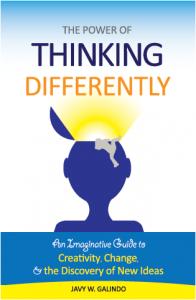Originally published in the May 2008 edition of Holistic Perspectives
Below is an edited version for the web.
Problem: A man is born in 1952 and dies in 1972 at the age of 25. How is this possible?
Human beings possess a well stocked intellectual toolkit for dealing with the complexities of life. Amongst other things, we utilize these tools to understand our environment, guide our actions, generate new ideas, and help us solve problems – including the one above. Reason is often regarded as our most common and trustworthy intellectual tool. However, there are times when new ideas and perspectives are attained without the use of our conscious, rational thought processes. In some circumstances rationality can lead to dead ends, and solutions to problems only show themselves through flashes of insight by thinking “outside the box”. These creative insights were once only associated with spiritual experiences, but there has been a renewed interest in cultivating such faculties in the corporate world in order to help boost profitability.
Even with this renewed interest in creative thinking, it is far from being a commonly used cognitive device. Because reason has proven to be an excellent tool for releasing human beings from the grips of dogma and superstition, it is routinely viewed as the primary faculty of the intellect. The tendency in some societies to value rationality and devalue all other modes of thought often gives reason a pseudo-monopoly on thinking, where religious ideology is frequently replaced with the ideology of scientism. This is reflected in educational systems that emphasize math and science courses over literature and the arts, and in cultures that favor literal, factual based living over religious, poetic, and mythological paths.
Recently, I was fortunate enough to partake in an independent study where I compared the neuroscience of our common and creative thought processes. In a world where our common thought processes often propel us into conflict, stress, meaninglessness, and growing global dilemmas, I believed it was important to investigate the possible validity and underlying science of the creative insights that occur through lateral thinking.
An examination of our common thought processes reveals that the brain has a neurological propensity for pattern recognition; i.e. it processes new information by immediately imposing meaning based on the dominant, associated, assumed context rather than objective inspection. Secondly, our judgments and decisions are often based on automatic, rule of thumb responses to this information rather than on thorough, logical analysis. It is this habitual use of pattern recognition that provides us with an instant interpretation of the problem I posed at the beginning, and it is why many have difficulty solving it. Habitual pattern recognition enables us to react quickly to our environment, but it also limits our view of the world, our access to new ideas, and our access to unique solutions because of its propensity to reinforce pre-existing cognitive frameworks (regardless of applicability) in order to maintain a consistent world-view.
In contrast, creative thinking requires the activation of different neurological structures and hemispheric processes. Research indicates that this faculty of mind can be exercised by challenging assumptions, exploring new associations between concepts — something that often occurs unconsciously and in meditative states – and by participating in any activity that makes use of our interpretive faculties such as reading folktales, wisdom stories, and jokes. Instead of our perceptions being limited to initial, recognized patterns, lateral thinking requires that we access multiple contexts and meanings in order to constellate deeper, more whole perceptions. For a culture whose common sense is based on literal materialism, seeing the world through the religious, mythological, or poetic lens may help establish deeper perceptions that reveal alternative ways of existing in a turbulent world with other human beings.
Through my investigation I have come to realize that creative thinking is not only a valid approach to processing information, but that it is an evolutionary gift that enables us to change, learn, and adapt to a complex, ever-changing world. Our creative faculties, and the aha flashes of insight that often come from them, seem much less based on pseudo-science than I had once thought. Nor do they seem to be merely extraneous byproducts of a rational mind. On the contrary, our ability to access multiple perceptions seems to be a necessary complement to our propensity for habitual pattern recognition. To quote Ralph Waldo Emerson, “A foolish consistency is the hobgoblin of little minds.” Our difficult task then is to be aware of our assumptions and habits, and to find the wisdom to discern their applicability given a particular circumstance. For those having difficulty solving my initial problem, it is only by thinking creatively that they could interpret 1952 and 1972 as possibly referencing hospital room numbers.
—
Please leave comments, questions, and suggestions below.



Trackbacks/Pingbacks
Buy:Lipothin.Buspar.Wellbutrin SR.Zetia.Female Cialis.Amoxicillin.Ventolin.Acomplia.Cozaar.Nymphomax.Lipitor.Advair.Lasix.Zocor.Benicar.Female Pink Viagra.SleepWell.Prozac.Seroquel.Aricept….